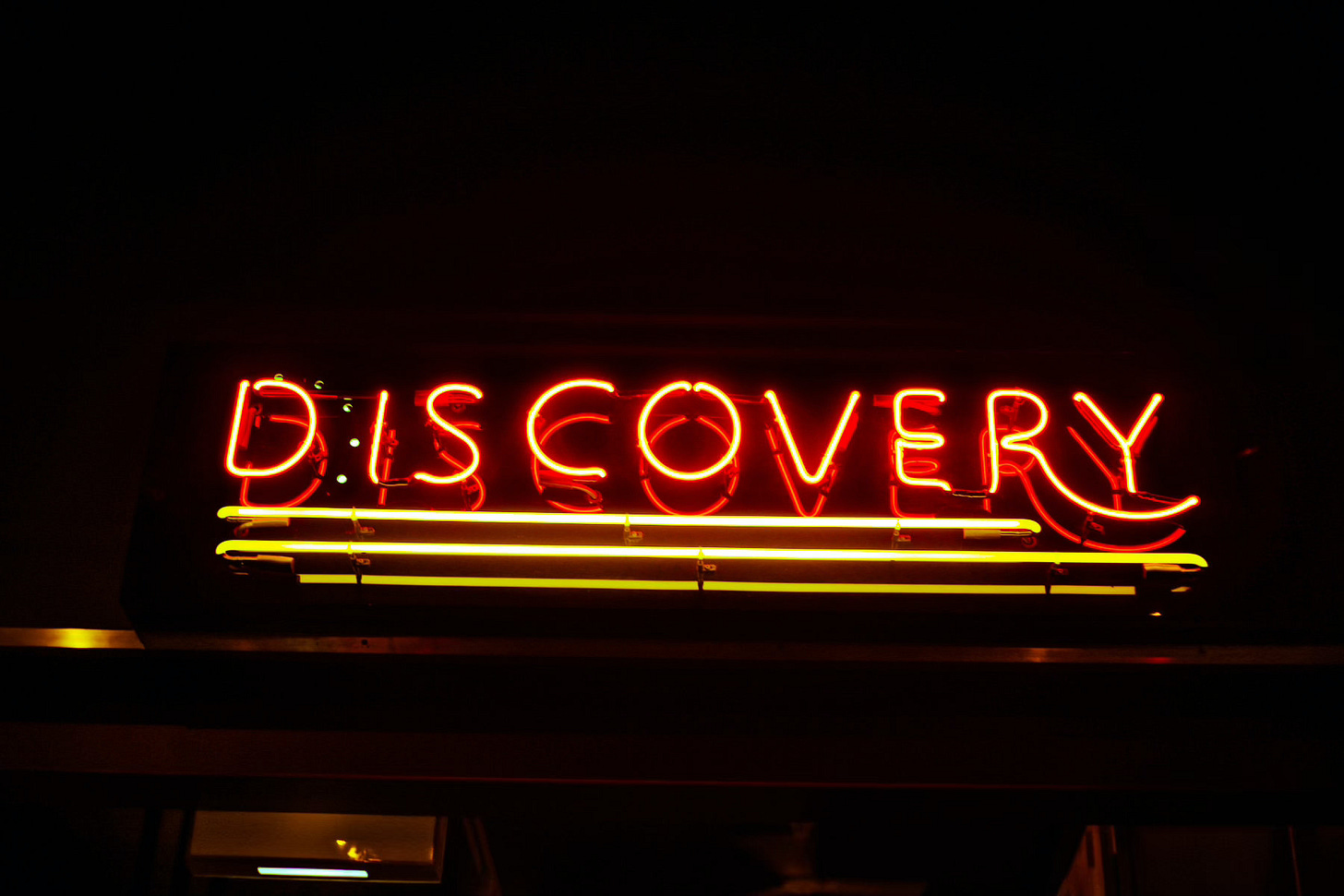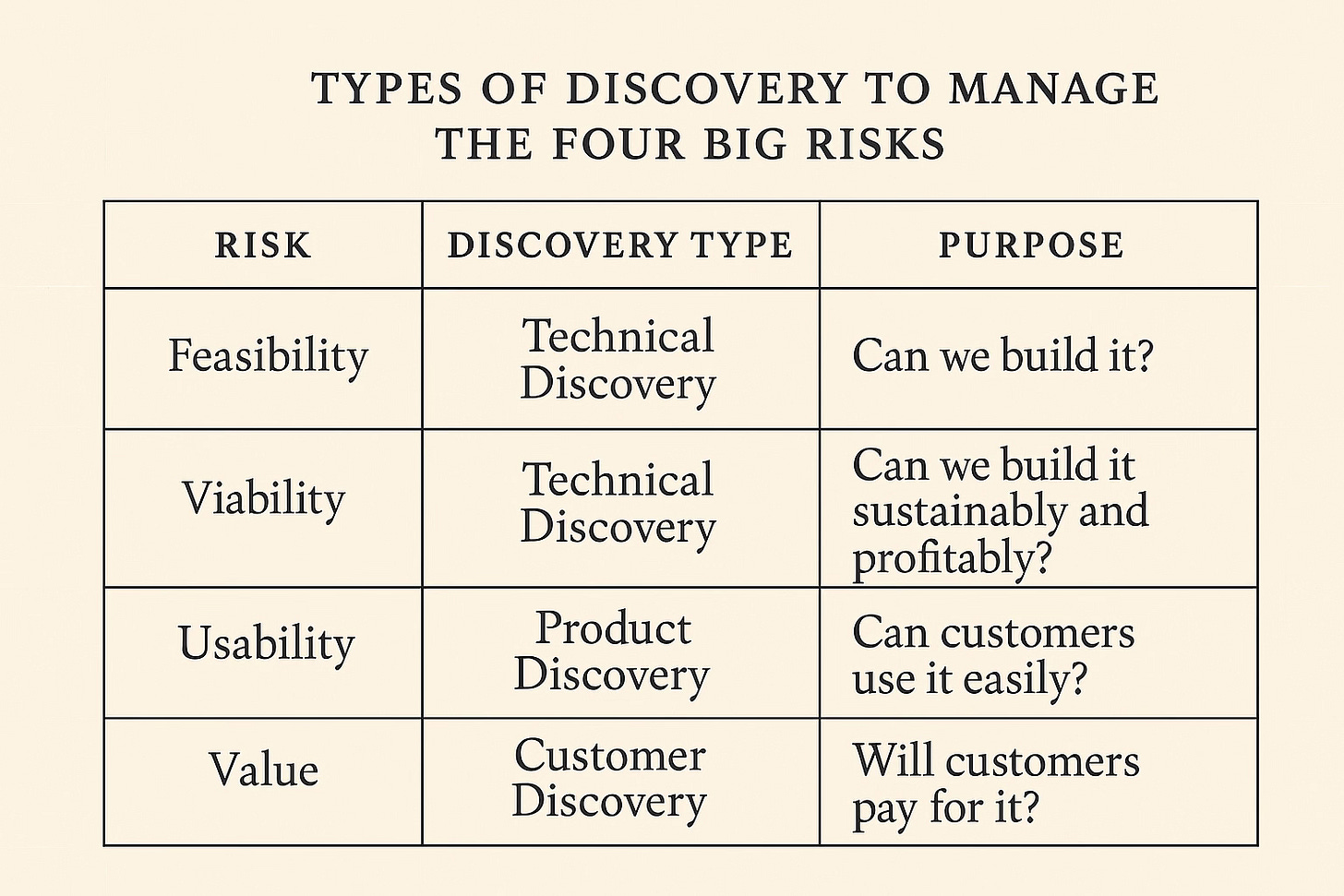In defence of discovery
What is discovery and why aren't more people doing it?
95% of new products fail. 92% of startups fail for the same reason.
“Many innovations fail because they introduce products or other solutions without a real need for them. There’s no market for the solutions they’ve created.” - Svafa Grönfeldt
Discovery is therefore vital. It enables a product team to test its assumptions and reveal underlying needs, problems, behaviours and potential methods to address these, before committing to a particular path or solution.
Discovery is often disregarded by product teams, usually because speed is prized over research and testing. This misunderstanding of Mark Zuckerberg’s famous motto to “move fast and break things” leads to poor problem-solution fit, and in turn poor product-market fit.
Sometimes, empathy is the enemy, with the product manager believing they are a good proxy for the customer without ever validating this viewpoint. The resulting disconnect can have severe consequences. The most famous example is probably Kodak failing to take advantage of the digital photography technology it helped to pioneer. More recently, the Metaverse was an expensive solution to a problem that didn’t exist.
If you build it, they won't come
Only if you’re solving a genuine problem do you have a chance of success. Even then, in a world of information overload, the chances of someone happening upon your product are vanishingly small. You need to research, to cultivate your customers so that you truly understand their needs and problems. Everyone knows the story of Airbnb being founded by a couple of guys renting air mattresses to designers for a conference. Fewer people know the key pivot for the fledgling company came when the founders travelled to New York to meet their users, which in turn led to a vital uptick in their numbers.
The need is no less great as you grow. If you’re lucky enough to cross the chasm from early adoption to broader market approval, you need to continuously discover the problems that your customers will pay you to solve, and help them to discover your solution. This is why the PandA framework emphasises the possible and potential phases. This places discovery at the centre of the team’s activities.
What is discovery anyway?
When product teams talk about discovery, they usually focus on product discovery. However, there are three types of discovery, all of which must work in concert:
Product Discovery: researching user and customer needs, problems and behaviours
Customer Discovery: finding your customers and whether the problem you are solving is important enough to them to pay you for it.
Technical Discovery: considering and testing various technical solutions to support the product requirements. How efficiently can you solve the problem?
Let's look at each of these in a little more detail.
Product discovery
Product discovery attempts to answer the following questions:
What problem is your product attempting to solve?
How might our product solve customer problems?
Product discovery can take many forms, including user research, A/B testing, interviews, focus groups, etc.
Customer discovery
“The founders and Product Development team define the first product. The job of the Customer Development team is to see whether there are customers and a market for that vision.” Steve Blank, The Four Steps to the Epiphany
The difference between product and customer discovery is one of focus, as both need to happen in concert for a product to be successful. Customer discovery is understanding the needs, behaviours and pain points of a particular customer segment, who will form the target market for your product.
You shouldn’t assume that product discovery will also help you identify your market niche or approach. These are two separate but related activities.
Product Discovery and Customer Discovery enable us to understand whether our product has identified a problem worth solving and how likely customers are to use our product to solve that problem. These types of discovery enable you to:
Identify your customers and your users (especially important where these are not the same, as is often the case in B2B)
Surface the high-value problems your customers have
Learn how your product solves these problems
Technical discovery
Technical discovery builds on the insights gained from product and customer discovery. Now that you have identified a problem worth solving, what technical choices do you need to make to power your solution? What are the architectural trade-offs you are willing to make? Technical discovery should be done in concert with the other discovery activities to avoid premature optimisation.
A good example of technical discovery helped drive Facebook’s eventual dominance over MySpace in social media. Observing the move toward mobile, Facebook invested heavily in its mobile app, giving users the same great experience on all devices. MySpace was slower to invest in mobile, and this was one of the factors that led to its loss of market share to Facebook.
The four big risks
Discovery is fundamental to the management of product risk. Taking the perspective of the Silicon Valley Product Group’s four big risks, we can see how.
Conclusion
Teams will often discount the importance of discovery, over-estimating their ability to think like customers, or prizing speed of development over research. However, it’s not discovery that slows you down. It’s what stops you from failing.




